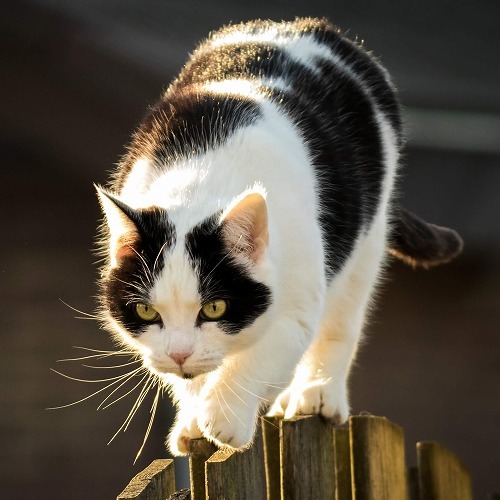|
|

Tag
As a likely cat owner, I am sure you have heard the comment “cats always land on their feet”. We are going to try to confirm or de-bunk this myth, by looking at some amazing recent neurology studies into the inner workings of the brain of a cat. Now recent discoveries in brain science, have also given us a real insight into the inner workings of cats. Not only has science confirmed that cats have an ability to recognize a face for up to 8 years, it has also shown us there is a hidden secret weapon that gives them exceptional balance, coordination and body awareness.
1. Cat brain V’s human brain
As we know, cats are capable of an enormous multitude of skills and personality traits but interestingly they have an element of their brain that hugely surpasses our own human brain. The human brain has a pre-frontal cortex (that bit of the brain which makes us over analyze peoples reactions as well as predict likely outcomes of events, e.g. Eating 3 bowls of pasta will likely make us bloat). Cats don’t have a very developed prefrontal cortex, which doesn’t have any big bearing on their attitude but it may explain why dome cats struggle with their self-control when they like something (e.g. my cat and his love and passion for chicken).
What cats do have increased capacity of is the cerebellum. Cats have a cerebellum that is relatively 2.5 times the size of the human cerebellum. Cats also have an interesting sensory input area (similar to how we have a part of the brain for vision) cats have a sensory area for their whiskers. The whisker length also tends to directly correlate to the width of your cat, enabling him/her to not become stuck when walking through a narrow space.
2. What does it mean?
Have you ever watched a person/ child try to climb a tree? The process can be a somewhat awkward experience, with the movements being both very cautious and slow. Generally watching any adult climb a tree is considerably slow and awkward. Comparatively, think about how a cat looks when they climb a tree. They perform these tasks with such a simple ease, they appear to almost glide up the tree not missing a step and being able to sleekly get to the highest point very quickly (even when they have never climbed the tree before).
3. What is a cerebellum?
The cerebellum is a small “mini” brain that sits over the area when our brain becomes the spinal cord. The cerebellum has an interesting but over-looked role. This part of the brain enables us to balance and also to co-ordinate movements.
Hence why it is fascinating that cats have such a large cerebellum.
Amazingly, the cerebellum of big cats (tigers, lions, jaguars etc.) is even larger comparatively than in small domestic cats. Meaning their ability to smoothly move in uncontrolled or unknown environments is even more exceptional than domestic cats.
4. Does it give them superpowers?
In a way, a big cerebellum can be taught of as a superpower. . This part of their excessive brain development, means that they have an exceptional ability to move in a well-orchestrated and coordinated manner when performing even the most accustomed of tasks.
Interestingly, this is one myth that definitely has some truth behind it. So this saying has some definite academic merit that confirms it. Cats’ have a very overdeveloped cerebellum in their brain, which allows them to have impressive balance and co-ordination for their movements. This indicating that if you did “drop” a cat, it is likely to be able to orientate itself well and re-c
Tag
Tag